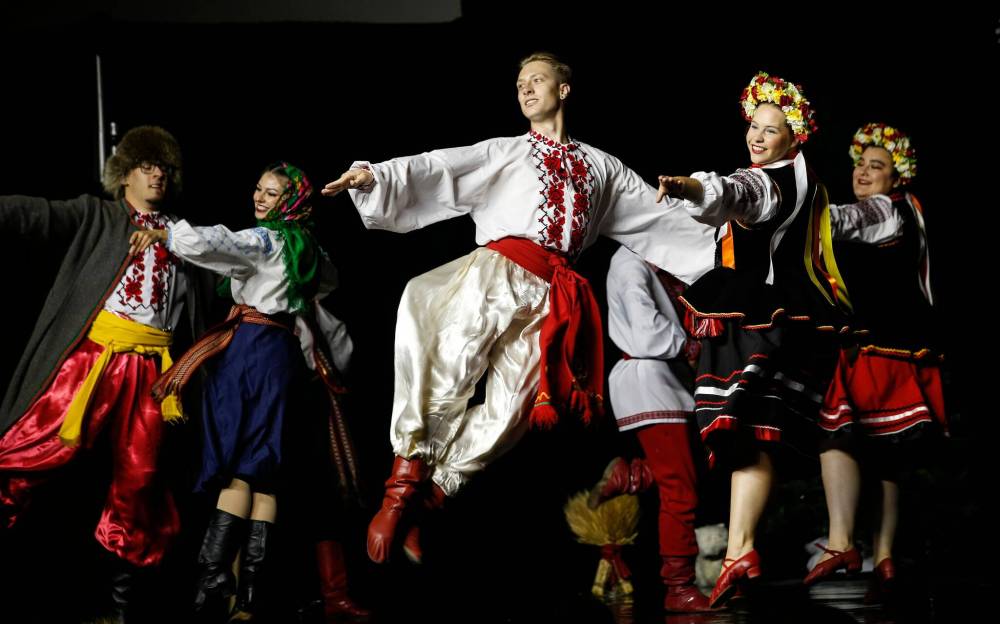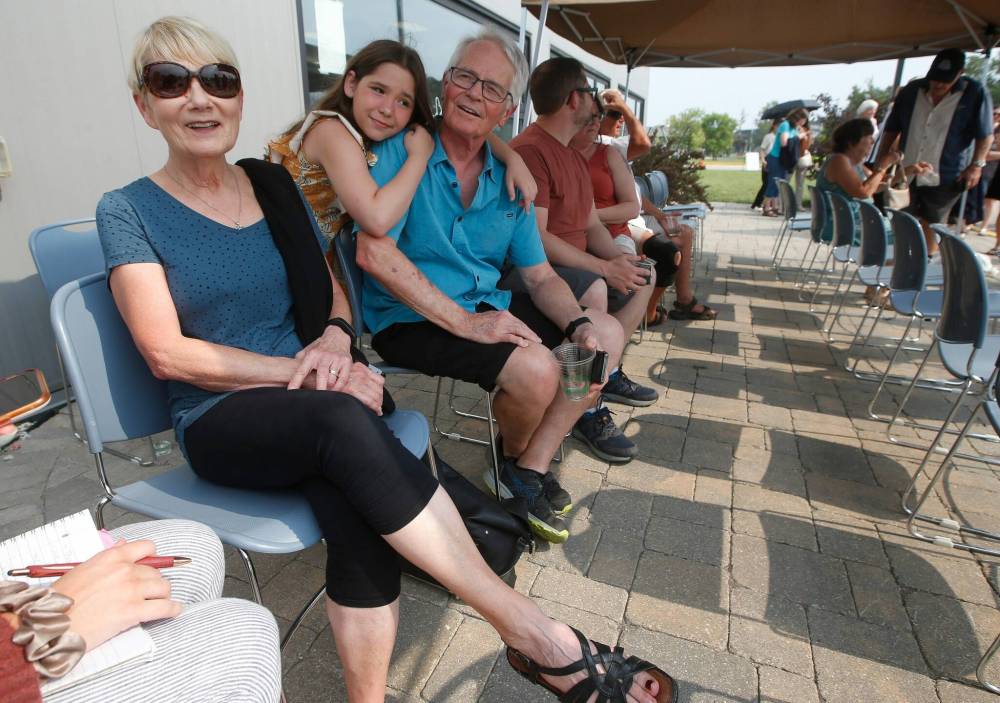
More than 125 people stood in line for Folklorama’s Spirit of Ukraine Pavilion, eager to watch the Zoloto Ukrainian Dance Ensemble & Company perform, taste the ethno-cultural cuisine and shop for souvenirs.
First in line, Jo Verstraete and her family said they are attending the pavilion to connect with their Ukrainian heritage and show support for their relatives who escaped Bucha, northwest of Kyiv, before their city was bombed during the Russian-Ukraine war.
“They have no home there right now because it was bombed and they are afraid to go back because they don’t want to step on a landmine,” said Verstraete.

JOHN WOODS / WINNIPEG FREE PRESS
Performers share their culture in the Spirit of Ukraine Pavilion at Folklorama in Winnipeg, Monday.
Her relatives were able to fly from Poland to Montreal for a visit this summer while they consider permanently resettling in Canada.
It’s been nearly 18 months since Russia invaded Ukraine, forcing almost eight million Ukrainians to flee their homes in the biggest European conflict-induced displacement since the Second World War.
Manitoba has welcomed more than 20,000 Ukrainian refugees, the highest number of any province on a per-capita basis.
Karen McLean said she’s been attending Folklorama since 1988, as she stood at the back of the line with her family.
Although she lives in South Carolina, she travels back to Winnipeg for two weeks every summer to visit her family and attend as many pavilions as possible during her trip.
“People come from all over for Folklorama,” said McLean. “It’s unique to Winnipeg and you get the original people coming into the city for it that bring the authentic foods and shows.”
Folklorama began in 1970 and has since grown to be the largest and longest-running multicultural festival of its kind in the world.
People in the line began to shuffle forward, making their way into the venue to stack their trays full of special dishes from a Ukrainian Christmas-themed dinner with cabbage rolls, beans, borsch, perishke — which is a sauerkraut-filled bun — perogies and more.
Attendees sat elbow to elbow along packed tables while the lights dimmed and the Zoloto performers took the stage to dance in winter celebration.
Dancing in the ensemble is a way to embrace Ukrainian heritage, participate in tradition, appreciate the culture and be a part of a family, said performer Ivan Tkach.
He said the performance showcases the importance of the holiday season and the aspect of storytelling through Ukrainian folklore.
“I am very fond of the dance Sviata Vechera, which means The Holy Night, where it’s centralized around the tradition of lighting a candle in the window, signifying that anyone who knocks on the door is allowed to come in on Christmas Eve,” said Tkach.

JOHN WOODS / WINNIPEG FREE PRESS
Jo and Larry Verstraete and their granddaughter, Reaghan, were first in line to get into the Ukraine pavilion in Winnipeg, Monday. They say the show lets them connect with their heritage.
Carol of the Bells, another popular holiday tune, was created during the 1900s in Ukraine, said performer and choreographer Dreya Bailes.
This song is my favourite, she said. It’s about swallows coming to inform the farmers that winter has ended, and spring is on its way.
“We’ve worked really hard to choreograph dances that tell a story that show all of the different traditions that we have to celebrate the Winter Festival,” said Bailes.
“We have performances throughout the year, but really, our hearts are invested in Folklorama.”
The Zoloto Ukrainian Dance Ensemble performs 45-minute sets for a total of 22 shows during the first week of Folklorama’s 52nd festival year, where ethno-cultural communities promote and celebrate their culture.
The majority of funds that are made at each pavilion during the festival remain in that community to support year-round programming such as language classes, traditional dance, immigration transition support, community connections and the preservation of heritage.


